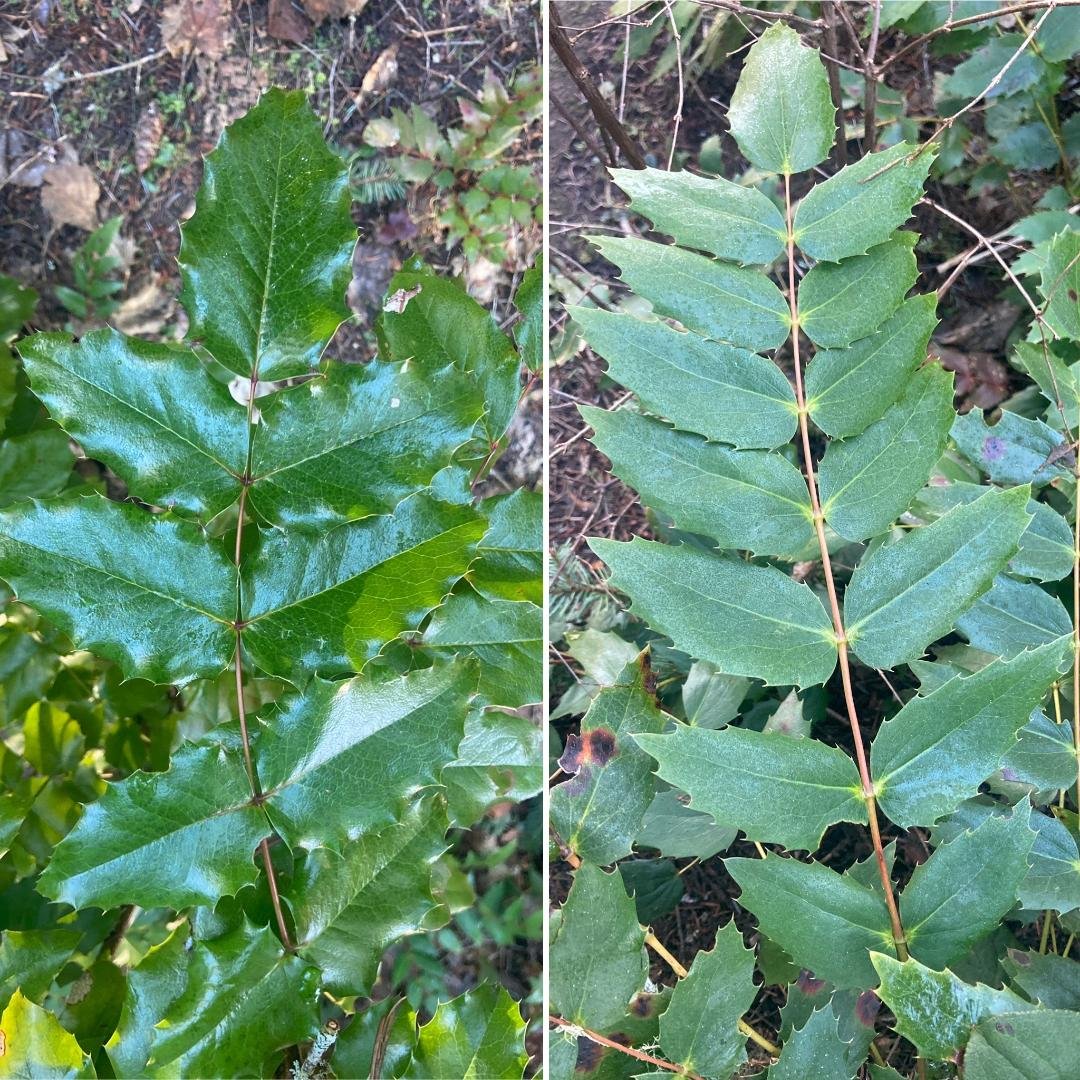Oregon’s state flower! The shiny and spiky leaves on this tall plant resemble holly, but they are not related.
Synonyms: Mahonia aquifolium
There are 2 species of Oregon Grape common to Silver Falls forests and meadows - B. aquifolium (Pictured left) being the second to the B. nervosa (pictured right) highlighted on this page. Both have attractive yellow flower clusters and blue fruit. The distinguishing characteristic between them is the leaf and the growth pattern. B. nervosa is low growing and spreading, whereas B. aquifolium is a taller shrub with shinier leaves with wavy edges.
Berberis aquifolium
Tall oregon grape
Description:
The state flower of Oregon
Stems have yellow inner bark, twigs smooth; bud scales 4–8(14) mm, deciduous.
Leaves are leathery on top, dull on the bottom; leaflets 5 to 9 inches, thin and flexible or rather rigid, glossy and smooth, green; terminal leaflets as long as wide, veined from base, wavy edges, each leaf margin with teeth, tipped with spines, tips pointed or sometimes rounded; petioles 1–6 cm.
Fruits oblong-ovoid, 6–10 mm, glaucous or dull grayish-green or blue color
Rarity: Common
Flowering time: March to June
Life cycle: Perennial
Height 1 to 4 feet
Habitat: Open woods and shrublands
Found in: British Columbia, California, Idaho, Montana, Oregon, Washington
Native: Yes
Source: Wildflowers of the Pacific Northwest
Additional Resource: Oregon Flora Project




